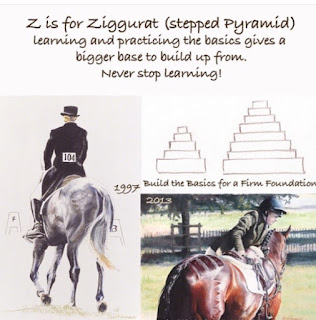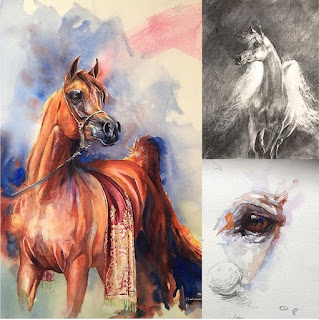As often happens with me, two articles that I have read
recently chimed with and connected with my thoughts – in this case concerning
drawing. The first was an online report of ‘Print Magazine’s’ interview with
Professor D.B. Dowd about his book: ‘Stick Figures: Drawing As a Human Practice’.
The other was a newspaper article by heart surgeon, Professor Stephen Westaby.
Both were talking about how drawing is so much more than simply putting pencil to
paper to make a pretty picture, but is in fact an exercise in manual dexterity,
spacial awareness, a memory enhancer and a tool for seeing and understanding
the world. In short, a contributory skill to almost any human endeavour and a
vital part of our learning. To the above I will add a form (probably an
original form) of Mindfulness or meditation.
Everyone can draw. Yes, you heard me right: everyone can
draw. We do it all the time. Writing is drawing symbols that relate to letters
and words. We can do that because we have practised doing it. We draw a map to direct someone. We can do that because we can see the way in our heads. Or we doodle to occupy or distract
our minds. We do that beacuse the result (product) does not matter, it is the doodling (the process) that is the point. Even if you feel that you have no natural ‘talent’ for drawing, it
can be taught and developed. We all drew as children and didn’t think about it
until criticism (often self-criticism) came into play. The question should not
be ‘why can’t you draw’, but ‘why did you stop?’
I could have stopped drawing at school. I started to find people around me who were better at it than me. My doodling habit got me reprimanded, sent to the Principal, even put in detention. It was not until much later when learning to teach (horse-riding) that I came across the VARK system of sensorary modalities for learning information. VARK stands for Visual, Aural, Read/write and Kinesthetic and the theory is that we learn best through one of those systems. In fact I think we all learn in all those ways, but to greater or lesser degrees, and we learn to enhance our weaker modalities the more we learn.
 |
| Can you draw a Stickman? it is not so hard to develop that using the Keyline approach. |
I could have stopped drawing at school. I started to find people around me who were better at it than me. My doodling habit got me reprimanded, sent to the Principal, even put in detention. It was not until much later when learning to teach (horse-riding) that I came across the VARK system of sensorary modalities for learning information. VARK stands for Visual, Aural, Read/write and Kinesthetic and the theory is that we learn best through one of those systems. In fact I think we all learn in all those ways, but to greater or lesser degrees, and we learn to enhance our weaker modalities the more we learn.
I am primarily Visual (no surprise!), then Kinesthetic,
Read/write and lastly Aural. I find it hardest to learn by listening. In school
it was mainly ‘Chalk and Talk’ and I would find my attention drifting: caught by
the view out of the window; the grain of the wood of my desk; the light on the
hair of my classmates; basically anything visual. Doodling helped distract my
main modality and allowed me to listen, but more than that, by recalling the
doodle I could also recall the information delivered whilst I was drawing.Nowadays I still doodle "when I shouldn't be doodling". I draw at meetings; when I am stressed or anxious; when I need to think or 'ground' myself or to lose myself.
I repeat: EVERYONE CAN DRAW. The problem is that we tend to
have a very narrow view of drawing as a linear outline with shading that is
representational, and these days more likely photo-realistic. To me that is boring
drawing. It has much skill in technique, but very little expression,
originality or merit as Art. I can draw like that – I do draw like that – to work
out the composition and tonal values for a painting, or to show to a client to confirm
the content and visual of their commissioned painting. If you are now shouting
at me via the computer think of this: the ultimate goal of photo-realism is
that the drawing looks like or even surpasses a photograph. To achieve this (and
you can’t just be good or very good, you have to be excellent) you have to
focus on technical ability as the aim. Once you achieve excellence two things
happen – 1) you have nowhere else to go and 2) your work is now
indistinguishable from every other excellent photo-realist. But I digress.
Everyone SHOULD draw. It is one of the great tools of
learning. It improves hand to eye co-ordination. It helps develop independent
thought and creative expression of ideas. It helps to learn problem solving. It
helps build a good memory and visual vocabulary. Doodling has been proved to
increase the memory of a list given at the time by 29%. It gives a sense of peace and Mindfulness or
meditation. It has been proven to help delay the onset of dementia.
 |
| It takes a bit of practice but Life drawing is an excellent discipline for learning and trying approaches: Tonal drawing |
EVERYONE CAN DRAW. In all my workshops, in all the life
drawing classes I have attended, everyone has been able to draw. They just have
to find out HOW they draw. I have written articles for magazines and led
workshops on five approaches to drawing and 10 approaches to drawing but there
are many more ways to draw than that. Drawing is learning to see, learning to
engage with the subject (the whole world) and learning your ‘drawing modality’
of translating that.
Let me help you find your way.
www.ruthbuchanan.com/workshopswww.ruthbuchanan.co.uk/workshops
Ruth will be teaching drawing at Pure Artwork Studios, near
Banbury, North Oxford:
24th April 2019 ‘The External Mind Sketchbook’
(one day workshop)
25th/26th April 2019 ‘Stronger Drawing
For Dramatic Painting’ (Ten Approaches to Drawing)



















